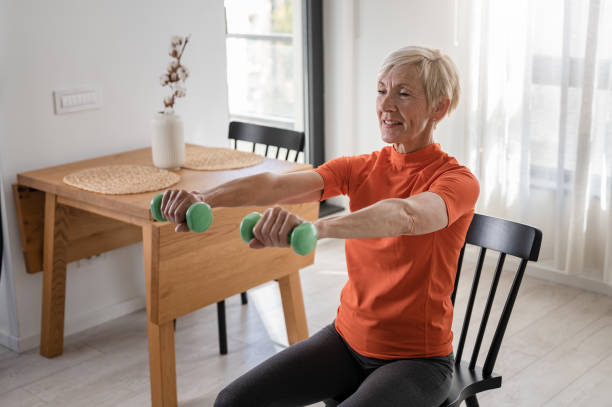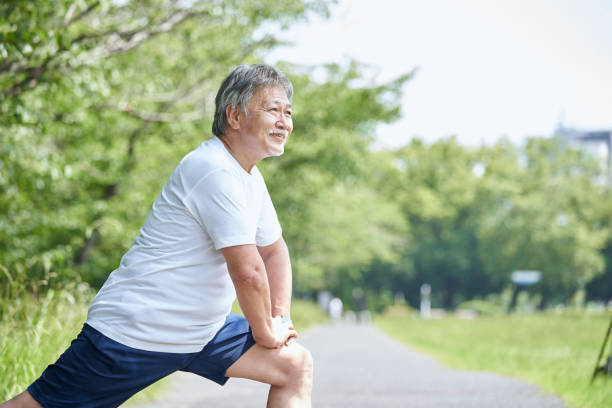Maintaining physical and mental health is crucial at any stage of life, but it becomes particularly important as we age. Regular physical activity has proven benefits for seniors, not just for the body but also for the mind.
As people age, they may face unique challenges such as loneliness, cognitive decline, or depression, but incorporating movement into daily routines can play a significant role in enhancing their mental well-being.
Contents
The Psychological Benefits of Physical Activity
Physical activity has a well-documented effect on mental health, contributing to the reduction of anxiety and depression. This positive impact is partly due to the release of endorphins—often referred to as “feel-good” hormones—that occur during exercise. These endorphins help foster a sense of well-being and positivity. For seniors, even light to moderate activity like walking, gentle stretching, or tai chi can stimulate these hormones, improving mood and reducing stress levels.
Studies show that physical activity can also improve sleep quality, which is another vital aspect of mental health. Seniors who engage in regular exercise tend to fall asleep more quickly and enjoy deeper sleep. This reduction in insomnia or restless sleep further promotes emotional stability and cognitive function.
Enhancing Cognitive Function
One of the most compelling reasons seniors should embrace physical activity is its connection to cognitive health. Aging naturally brings about changes in the brain, with some seniors experiencing significant cognitive decline. However, research indicates that regular exercise can slow down the progression of such decline and, in some cases, even reverse minor impairments.
Physical activity, particularly aerobic exercises like walking, swimming, or cycling, helps increase blood flow to the brain. This increase in circulation delivers more oxygen and nutrients to brain tissues, supporting overall brain health and functionality. Additionally, exercises that challenge coordination and concentration, such as dance or yoga, stimulate cognitive skills and can help maintain mental sharpness.
Social Interaction and Mental Health
Physical activity often provides an opportunity for social engagement, which is a key factor in mental health. Group classes, community walks, or recreational sports provide seniors with a chance to connect with others, thereby combating feelings of loneliness and isolation. The social aspect of physical activity can be just as beneficial as the movement itself, as it fosters a sense of belonging and community support.
Whether it’s joining a local walking club or participating in chair exercises at a senior center, the social interactions that come with group activities can alleviate symptoms of depression and create a network of friends who motivate each other to stay active.
Reducing Stress and Anxiety
Physical activity triggers the release of serotonin and dopamine, neurotransmitters that contribute to mood regulation and stress reduction. For seniors who may face significant life changes—such as retirement, loss of loved ones, or health challenges—these stress-reducing effects are invaluable. Activities such as swimming or tai chi combine physical movement with meditative aspects, offering both relaxation and physical stimulation. This combination can be especially effective in lowering cortisol levels, the hormone responsible for stress.
Tailoring Activities to Individual Needs

One of the concerns seniors may have is whether physical activity is feasible or safe given certain health limitations. However, physical activity can be adapted to meet the needs of almost anyone. Low-impact exercises, such as water aerobics, chair yoga, or walking, can provide substantial benefits without putting undue strain on the body. Even stretching exercises or seated strength training can improve circulation, flexibility, and muscle tone for those with mobility issues, contributing to overall mental well-being.
Creating a Sustainable Routine
For physical activity to have lasting benefits, seniors need to establish a routine that is both enjoyable and sustainable. Experts suggest aiming for at least 150 minutes of moderate aerobic exercise per week, which can be broken down into shorter, manageable sessions. The key is consistency. Seniors should choose activities they enjoy, as this increases the likelihood of sticking with them. It can be as simple as walking a dog, gardening, or participating in a gentle dance class. These activities not only contribute to physical health but also create moments of joy and accomplishment, further boosting mental health.
Overcoming Barriers to Activity
Some obstacles may prevent seniors from engaging in physical activity, such as health conditions, lack of motivation, or limited access to safe environments. Families and caregivers can provide support by encouraging activities, arranging transportation, or even joining seniors in their physical routines to address these challenges. Communities can play a role by offering senior-friendly classes and ensuring that facilities are accessible and welcoming.
Conclusion
The link between physical activity and mental health is undeniable, especially for seniors. Regular movement supports not just physical fitness but also emotional and cognitive well-being. By integrating tailored and enjoyable activities into their routines, seniors can experience better mental health, greater social connection, and a higher quality of life. The journey to wellness is multifaceted, but with commitment and support, seniors can reap the extensive benefits physical activity offers both mind and body.
